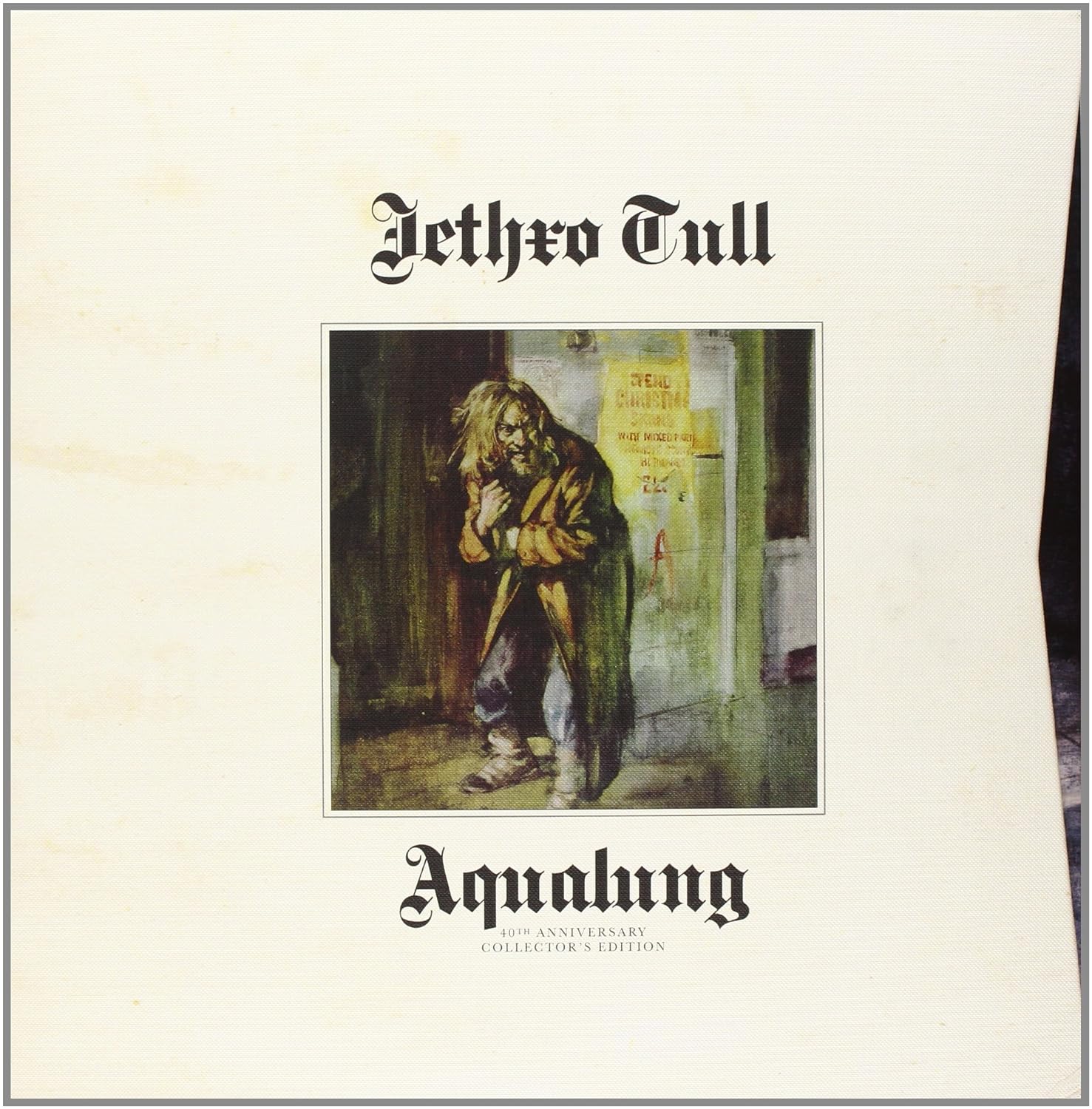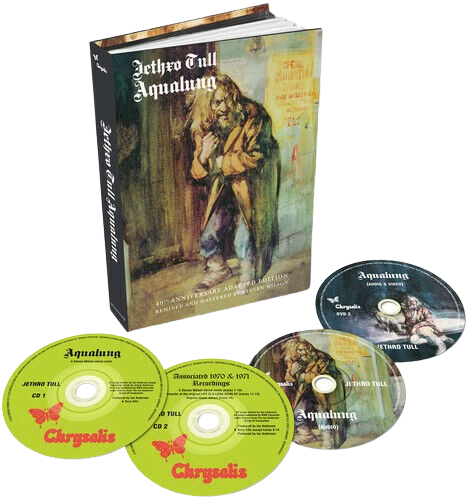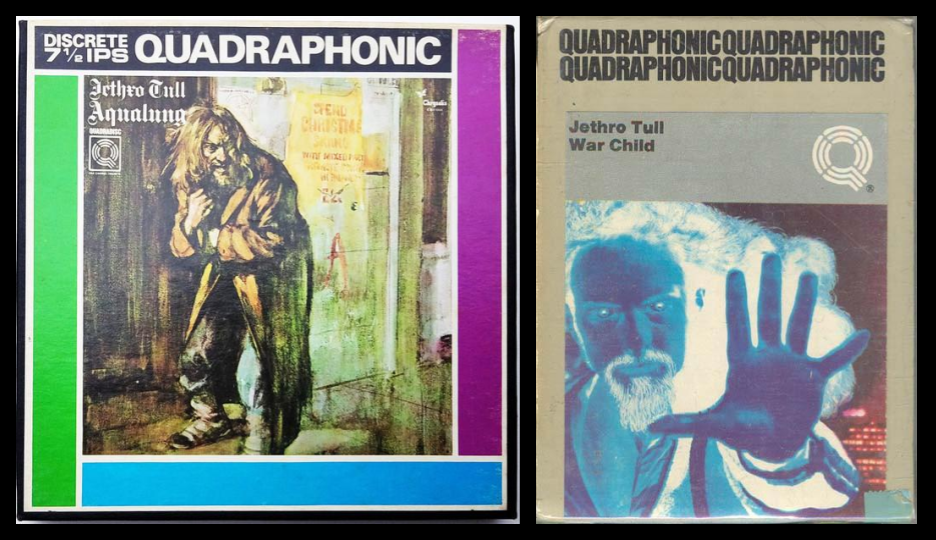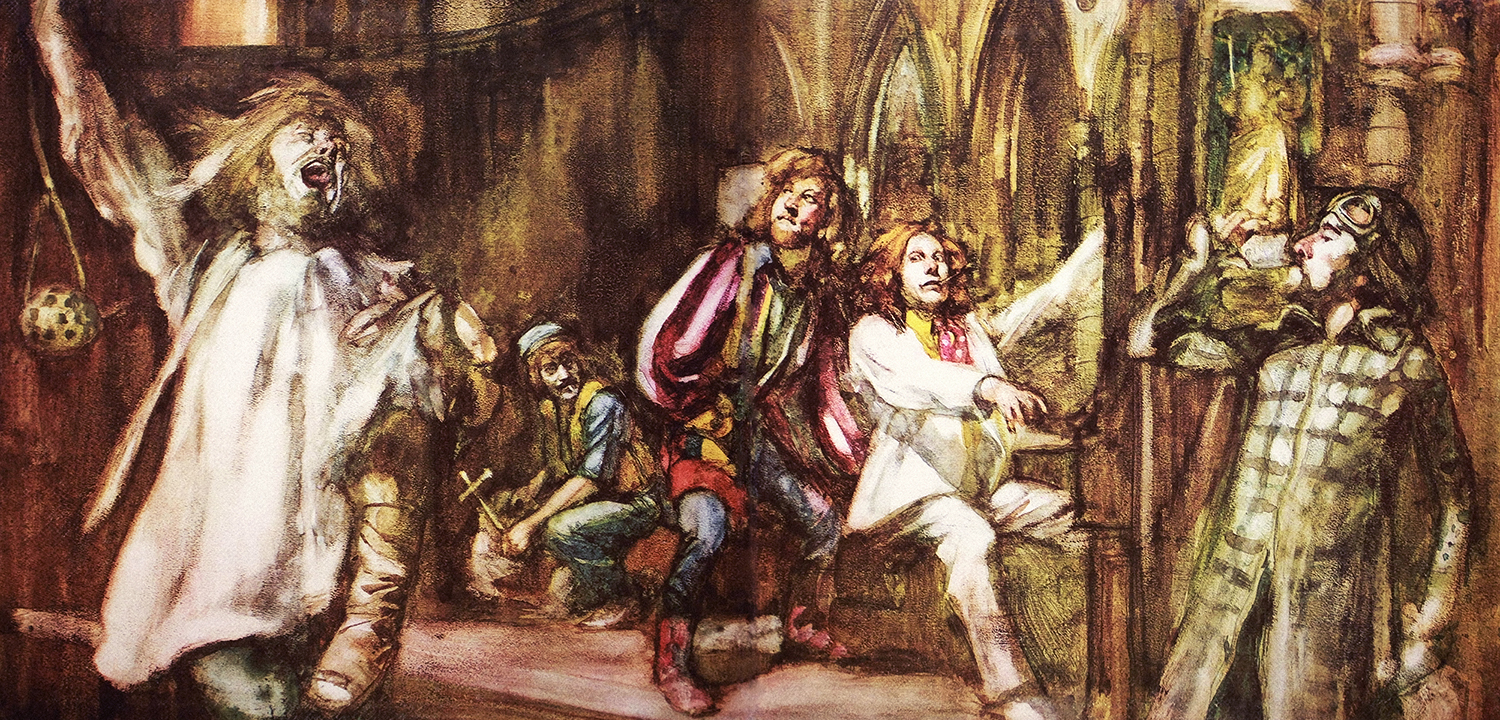Widely considered their magnum opus today, Aqualung (1971) ushered Jethro Tull into the most successful period of their career and remains the band’s best-selling album. Tull had begun life as a blues-rock outfit several years earlier, though they’d largely shed those influences with the departures of founding guitarist Mick Abrahams (who only appears on their 1968 debut This Was) and original bassist Glenn Cornick. Aqualung bridges the gap between that early blusier period and the folk-oriented art rock sound that would go on to define them throughout the ensuing decade.
Ian Anderson truly comes into his own as a singer-songwriter on this album, with delicate acoustic tracks like “Wond’ring Aloud'' and “Slipstream” nicely counterbalanced by the harder rock stylings of the title track and “Locomotive Breath.” Lyrically, he tackles complex social issues such as poverty, infidelity, and organized religion.
Though it is often cited as a "concept album," both Anderson and the band have thoroughly rejected that notion. In fact, the follow-up release Thick As A Brick (1972) was written as a deliberate satire of conceptual rock titles from that era like The Who’s Tommy (1969) or Emerson Lake & Palmer’s Tarkus (1971).
The Aqualung tracking sessions began in December 1970 at Island Records’ new studio in Basing Street, London, ultimately lasting several weeks. The facility contained two live rooms, the larger of which had been booked by Led Zeppelin to record their fourth album. Following the band’s early 1971 tour to support Benefit (1970), mixing commenced in February of that year and the album was released on March 19.
“It was the first time that I’d ever had the courage to go into the studio on my own and sit down and strum and sing a song. There was only one song before the Aqualung album where I did it all on my own. People forget that a lot of the album is just acoustic guitar and very stripped down and it’s not full-blown rock songs, although there are a few of those on there too.”
Ian Anderson, 2011
Though Aqualung remains a benchmark for the band lyrically and compositionally, I think most fans would agree that it’s not their best-sounding studio release. The album had been remastered and reissued several times over throughout the ensuing decades, but in 2011 Steven Wilson was invited to create a brand-new mix from the original multitrack masters.
The end result is a stunning upgrade in fidelity from the 1971 release. The thin and boxy sound of the original LP and CD editions is gone, replaced by a full-bodied yet still authentically vintage presentation. Wilson’s remixes in both stereo and 5.1 surround sound were first released on Blu-Ray and DVD discs contained within the 40th Anniversary Collector’s Edition box set.
It later became apparent that the 2011 box set release was affected by some mastering errors, including overly-bright tonality and several audio dropouts, all of which were corrected in the 2016 2CD/2DVD book-sized “Adapted Edition.” After several years of it being out-of-print and fetching frankly ridiculous sums on the used market, Chrysalis/Parlophone unexpectedly ordered a repress of the 2016 edition in December 2023–much to the delight of fans like myself who missed it the first time around.

The signature menacing guitar riff that opens the title track extends out from the front speakers, quickly joined by Ian Anderson’s voice in the center channel. Piano and a second guitar line fill out the rear of the soundstage, with Clive Bunker’s drums crashing all around. Nearly all the instruments soon drop out, leaving just Anderson’s telephone-EQ’d vocal isolated in the center ("sun streaking cold..."). Piano soon rejoins from the rear, along with double-tracked vocals (“...and you snatch your rattling last breaths'') and Martin Barre’s classic guitar solo.
The band then moves into the proto-metallic “Cross-Eyed Mary,” which finally has the low-end ‘punch’ and power it’s always deserved. Anderson’s multi-tracked vocals again emanate from all around the listener, with John Evan’s hammond organ popping up from directly behind. Barre’s guitar and Anderson’s flute duel it out from side-to-side while piano percolates from the left back corner.
Background vocals and a second acoustic guitar fill out the rear stage for “Cheap Day Return,” taking us into the folk-y “Mother Goose.” Different flute parts appear isolated in each back corner, nicely complimenting the acoustic guitar and rhythm section upfront. There’s a great moment at around the two-minute mark where Martin Barre’s electric guitar suddenly appears centered in the rear speakers, directly behind the listener’s head.
“Ian has stated that the original recording sessions for Aqualung were a struggle to overcome the technical shortcomings of the studio situation the band found themselves in, but I was pleased to discover that what was on the multitrack master tapes sounded better than the 1971 mix would suggest. Using the digitally-transferred 16 and 8-track tapes we were able to get a lot more tone from the instruments, as well as a much greater sense of depth and clarity in the sonic picture. It’s been a privilege and an instruction to be able to delve into all the Aqualung sessions [and] create this 40th anniversary edition for 21st century ears. For me, it feels a bit like the musical equivalent of cleaning the sistine chapel!”
Steven Wilson, July 2011
“Wond’ring Aloud” begins as more of an expanded stereo presentation, with Anderson’s vocal plus acoustic guitar upfront and just reverb filling out the rear soundstage. As the song builds, strings and piano gradually fade in from behind. Laughter from the left rear speaker announces the beginning of “Up To Me,” as acoustic guitar and flute playing the same riff are split between the front and back speakers. Percussion clatters across the rears, while Barre’s guitar bursts from the front right channel.
From an immersive standpoint, one of the most impressive tracks on the album would have to be “My God.” The enhanced dynamic range of the remix really shows in this song, especially when the full band comes thundering in after the ominous acoustic intro. Electric guitar highlights wildly tear through the right rear speaker, with the delays hitting off the other channels. Cathedral-like ambience and chanting voices surround the listener during the extended solo section, while the flute remains pegged to the center speaker to stunning effect.
“Locomotive Breath,” one of the band’s biggest hits and my personal favorite track on the album, begins simply enough with the piano upfront and its reverbs cascading to the rear. Martin Barre’s guitar soon appears from behind, as the rhythm section comes charging in at full force. The iconic choppy rhythm guitar is fully-isolated in the rears, while lead guitar licks weave in-and-out of the front stage behind the lead vocal. I did feel that the flute solo in the center speaker was slightly veiled in comparison to the original stereo, but it’s not a deal-breaker.

As an added bonus, the 2016 book-sized reissue features eight additional ‘associated recordings’ from the Aqualung sessions also remixed to stereo and 5.1 by Steven Wilson. Sound quality is variable across the associated recordings, with some tracks such as “Lick Your Fingers Clean” and the early take of “My God” suffering from harshness in the higher frequencies. The early version of “Wind-Up” performed in a higher key sounds like the same alternate take that was used for the quadraphonic mix.
Speaking of which, both the 2011 and 2016 sets also include a digital transfer of the rare 1974 quadraphonic mix that was originally released on four-channel LP, 8-track cartridge, and reel-to-reel tape format. Ian Anderson and engineer Robin Black first embraced quadraphonic sound for 1974’s WarChild, then went back and created a four-channel remix of Aqualung.
Despite the music industry largely abandoning the format by 1975, the Jethro Tull team carried on creating quad mixes of 1975’s Minstrel In The Gallery, 1976’s Too Old To Rock ‘n’ Roll, Too Young To Die!, and half of 1977’s Songs From The Wood–all of which remained unreleased until the recent 40th anniversary editions.

The quadraphonic mix offers a fascinating, albeit sometimes odd alternative presentation of the album. Eagle-eared fans will spot quite a number of interesting deviations from the original production, such as the title track missing the telephone EQ effect on the lead vocal, the second acoustic guitar part in "Cheap Day Return" brought way up in level, and a much drier presentation of the choral voices during the flute solo in "My God."
That said, the soundstage isn't all that dissimilar to the new 5.1 mix. The front channels usually carry the rhythm section, while the rears supply ancillary elements like flute, piano, rhythm guitar, and percussion. One key difference is that Ian Anderson's voice often fills up all four corners, projecting out into the center of the listening space. Whereas the new 5.1 mix of "Locomotive Breath" had the rhythm guitar in rear center and lead upfront, the quad version places the rhythm line mostly in rear left and lead fills in rear right. The flute solo is also in the rears, emitting its reverb to the front.
While I’m thrilled to have had the opportunity to purchase this long out-of-print and rare deluxe edition at retail price, it would be a touch disappointing if this reissue marked the final word on Aqualung. Though the 50th anniversary passed in 2021, I’d love to see Steven Wilson revisit this album with a new Dolby Atmos mix. Until that happens, this is undoubtedly the definitive version.
Support IAA by purchasing the Aqualung 2CD/2DVD Adapted Edition via this link!

